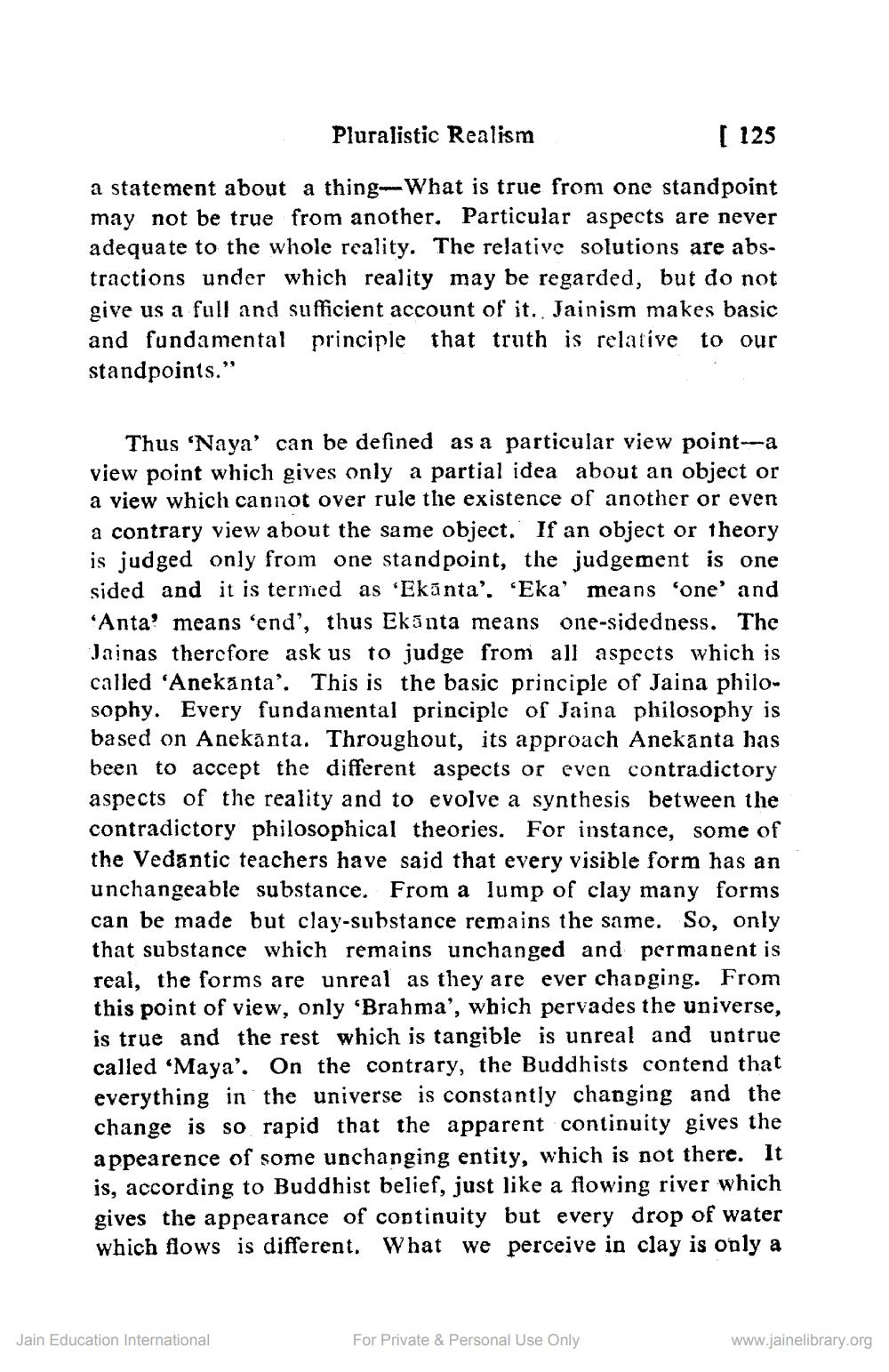________________
Pluralistic Realism
[ 125
a statement about a thing-What is true from one standpoint may not be true from another. Particular aspects are never adequate to the whole reality. The relative solutions are abstractions under which reality may be regarded, but do not give us a full and sufficient account of it. Jainism makes basic and fundamental principle that truth is relative to our standpoints."
Thus 'Naya' can be defined as a particular view point--a view point which gives only a partial idea about an object or a view which cannot over rule the existence of another or even a contrary view about the same object. If an object or theory is judged only from one standpoint, the judgement is one sided and it is termed as 'Ekānta'. 'Eka' means 'one' and 'Anta? means 'end', thus Ekänta means one-sidedness. The Jainas therefore ask us to judge from all aspects which is called 'Anekanta'. This is the basic principle of Jaina philosophy. Every fundamental principle of Jaina philosophy is based on Anekanta. Throughout, its approach Anekanta has been to accept the different aspects or even contradictory aspects of the reality and to evolve a synthesis between the contradictory philosophical theories. For instance, some of the Vedantic teachers have said that every visible form has an unchangeable substance. From a lump of clay many forms can be made but clay-substance remains the same. So, only that substance which remains unchanged and permanent is real, the forms are unreal as they are ever changing. From this point of view, only "Brahma', which pervades the universe, is true and the rest which is tangible is unreal and untrue called 'Maya'. On the contrary, the Buddhists contend that everything in the universe is constantly changing and the change is so rapid that the apparent continuity gives the appearence of some unchanging entity, which is not there. It is, according to Buddhist belief, just like a flowing river which gives the appearance of coptinuity but every drop of water which flows is different. What we perceive in clay is only a
Jain Education International
For Private & Personal Use Only
www.jainelibrary.org




